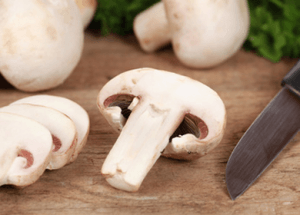There is very good reason why we feel so much better when we spend time outdoors. Besides the fresh air and freedom, the body knows very well that time in the sun is vital for vitamin D formation. Our current culture spends remarkably little time under the sun compared to our ancestors who were not tied to desks or exposed to synthetic light. Research clearly indicates that vitamin D deficiency is a pressing issue in our day and that adequate levels of this vitamin protect and prevent the body from a host of illnesses and compromising health conditions.
A recent study released by the Boston School of Medicine demonstrates that an increase in vitamin D levels in the blood has a significant impact on gene expression in our immune system. While the relationship between a deficiency in vitamin D and musculoskeletal health has been clearly established, this new study indicates that this same vitamin may decrease the risk of other non musculoskeletal health conditions such as type 2 diabetes and even cancer. Yet another good reason to get outside each day.
The best form of vitamin D does not come in a pill, it comes from the sun. When our skin is exposed to the sunlight, the body makes vitamin D, hence its nickname “the sunshine vitamin.” As little as twenty minutes daily between the hours of 11am and 3pm is sufficient to optimize vitamin D levels.
What about people who don’t get outside or those that live in climates where sunshine is not prevalent? After the sun, the next best place to turn for vitamin D is to food. Whether or not you are deficient in vitamin D, you will benefit from  adding these healthy foods to your diet.
adding these healthy foods to your diet.
-Salmon – Fresh caught, wild salmon has more vitamin D than any other food source. Just one half of a fillet of sockeye salmon has almost twice as much vitamin D as the daily recommended amount.
-Tuna – Both tuna oil and tuna are high in vitamin D. Light tuna in oil is the best choice because it contains less mercury than white tuna.
-Sole or Flounder – Pacific founder sole, cod or flounder all contain vitamin D. The fish stock from the Atlantic is depleted in vitamin D, so choose Pacific varieties.
-Fortified Milk and Cereal – If you include some fortified milk and cereal in your diet, you will get a vitamin D boost. However, be careful what kind of cereal you choose. Organic whole grains and low sugar kinds are best. Read the labels carefully and look for gluten-free where possible.
– Eggs – One of mother nature’s perfect foods, eggs contain vitamin D, in addition to other health-promoting nutrients such as vitamin K2. Free range eggs are the best choice.
–Mushrooms – Depending on the type, mushrooms have a fair amount of vitamin D. Shiitake mushrooms have the biggest supply.
-Beef Liver – For those that don’t get much exposure to the sun, eating beef liver as part of a healthy diet will help to increase D levels. Choose liver from organic, grass-fed cows for the most benefits.
-Ricotta Cheese – Although you would have to eat a lot of this popular cheese to get your daily value of vitamin D, it has at least five times the amount of D of all other cheese varieties.
If none of these foods suits your fancy, the next best option is to take a cod liver supplement. Cod liver naturally contains high levels of vitamin D and is easy to take in liquid or capsule form.
-The Alternative Daily
Sources:
http://www.eurekalert.org/pub_releases/2013-03/bumc-srp032013.php

